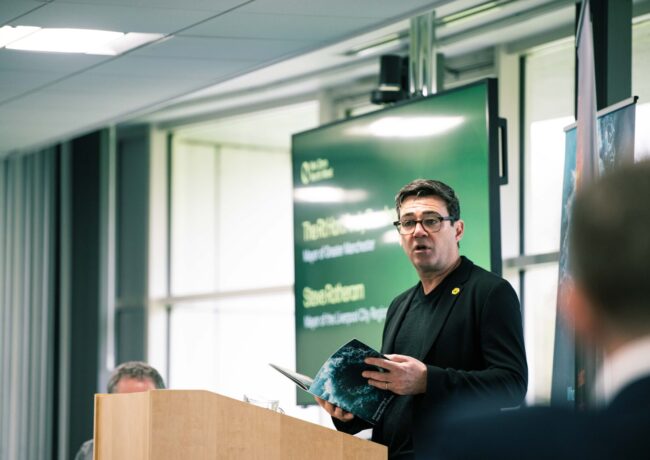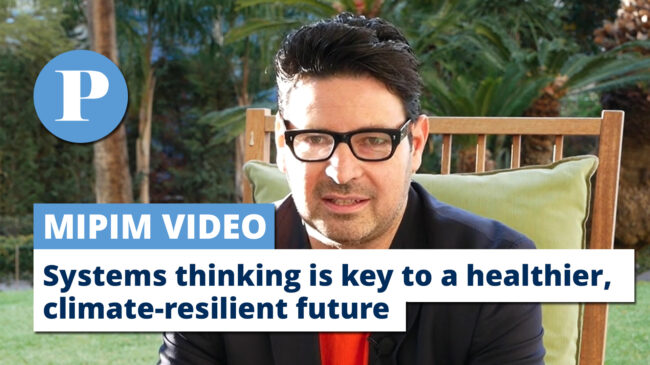Commentary
COMMENT | Net zero carbon: is it achievable and how do we get there?
 To achieve net zero as a country by 2050, the UK is now targeting a 68% reduction in carbon emissions by 2030, compared to 1990 levels, writes Dmitri Korolenko of SI Sealy.
To achieve net zero as a country by 2050, the UK is now targeting a 68% reduction in carbon emissions by 2030, compared to 1990 levels, writes Dmitri Korolenko of SI Sealy.
To achieve this ambitious goal, it’s important to understand what net zero carbon in buildings actually is. The UK Green Building Council defines two equally important approaches:
- Net zero carbon – construction: when the amount of carbon emissions associated with a building’s product and construction stages up to practical completion is zero or negative, using offsets or the net export of on-site renewable energy.
- Net zero carbon – operational energy: when the amount of carbon emissions associated with the building’s operational energy on an annual basis is zero or negative. A net zero carbon building is highly energy efficient and powered from on-site and/or off-site renewable energy sources, with any remaining carbon balance offset.
A true net zero carbon building would consider the cradle-to-grave approach, but its adoption is currently problematic due to a lack of standardised methodology for accurately reporting carbon emissions from facilities management activities and end-of-life stages.
Construction carbon
The RICS Professional Statement, Whole life carbon assessment for the built environment, suggests that carbon emissions should be tallied up, including the building materials at production, transportation, and installation stages. This should be carried out in two phases:
- The first assessment should take place as early as concept design (RIBA Stage 2) and as a minimum before the commencement of technical design (RIBA Stage 4). This ensures the assessment has the greatest potential to drive carbon reductions in future stages of the project.
- A further assessment should be undertaken at practical completion (end of RIBA stage 6) to measure the as-built outcome. This final assessment should be used to determine the extent of carbon impacts needing to be offset to achieve net zero carbon for construction.
Remaining carbon can be offset using two routes:
- One-off payment made at the point of completion; and/or
- Net export of on-site renewable energy on an annual basis.
The two offset routes above can be used separately or together. Where on-site renewable energy generation is used as an offset, the achievement of net zero carbon for operational energy should take precedence.
Once net zero carbon for operational energy has been achieved, any surplus carbon credits from exporting on-site renewable energy can be used to offset embodied impacts.
Operational energy
Investing in high performance building envelopes, energy efficiency and low carbon energy generation together with demand reduction is the most effective way to achieve net zero operational carbon. Achieving maximum reduction in annual energy consumption requires setting a target as early as concept design stage and adopting a holistic approach to design development.
All aspects of building form, function, and systems in relation to overall energy use need to be considered to reduce both energy demand and use.
Here are the steps you need to take:
Form and orientation optimisation
The first step in reducing energy demand is to undertake a dynamic assessment of the building form and orientation in relation to its site, surroundings, and functional requirements. A thoughtfully massed and oriented building utilises the site’s features to provide balanced levels of daylight, natural ventilation and opportunities for renewable energy generation. Considering the annual movement of the sun around the building can also serve to reduce annual heating and cooling loads and prevent summertime over-heating risk.
Passive design and building fabric optimisation
This serves to reduce the overall energy demand required to operate the building. Improvements include optimum use of insulation and thermal mass; shading design; natural daylighting, ventilation and free-cooling provisions.
Systems efficiency
This involves reducing the amount of energy the building consumes by using intelligent engineering solutions and energy efficient equipment. Building systems need to be scaled appropriately to current and predicted future demand to prevent over and under-sizing.
Energy management
A smart energy/building management system needs to be implemented. Improvements include conducting energy audits; optimising setpoints and start and stop times; managing occupant behaviour; managing ‘peak loads’; achieving ISO 50001 accreditation.
On-site renewables
Where feasible, renewable energy generation is implemented on-site. Renewable energy sources include wind, solar, biomass and CHP.
Off-site renewables
Adding purchase of renewable energy generated off-site will also offset carbon emissions in operation, for example, Power Purchase Agreements for electricity; certified low-carbon district heating/cooling; certified green gas such as biogas from sustainable sources.
Carbon offsetting
After all the above steps have been taken and the building’s operation is not net zero, ‘carbon offsetting’ is required. This entails purchasing certified carbon credits from companies that invest in rainforests or other means of carbon capture and storage.
Human centric design
The physical and mental wellbeing of building occupants should not be compromised because of carbon emission reduction targets. Primary focus should always be on creating environments where users thrive.
So how achievable is it?
Achieving net zero is no small feat. The construction and operational assessments are often at odds with each other as efficient fabric, systems and renewable generation technologies often involve materials with high embodied carbon content.
We would therefore recommend prioritising the net zero carbon operational energy approach, while trying to use sustainable materials and decarbonise the supply chain.
The net zero carbon target needs to be set as early as possible to enable all relevant modelling and design work to focus on that goal.
Ultimately achieving net zero carbon will rely heavily on the building’s site and function. On some projects, the only way to reach net zero carbon may be carbon offsetting and the purchase of renewable energy. In most cases, however, net zero carbon is achievable – if the client’s commitment, an experienced design team and an appropriate budget are all in place.
 SI Sealy’s integrated team of expert engineers and sustainability consultants can provide guidance and detailed design solutions on the above
SI Sealy’s integrated team of expert engineers and sustainability consultants can provide guidance and detailed design solutions on the above
- Dmitri Korolenko is lead building physics and sustainability engineer at SI Sealy




